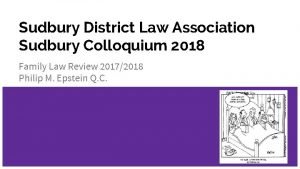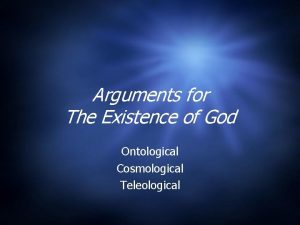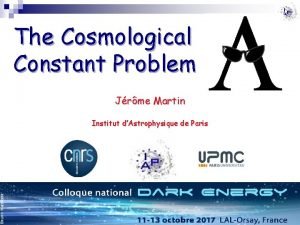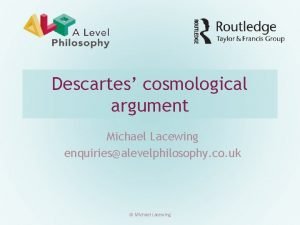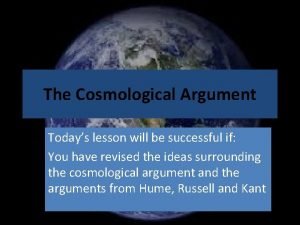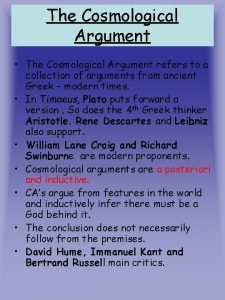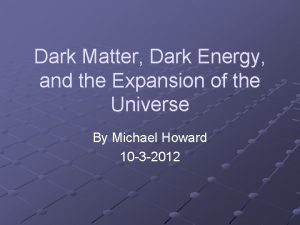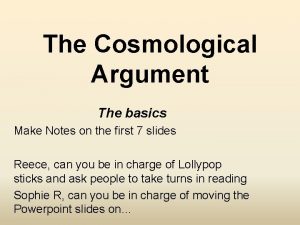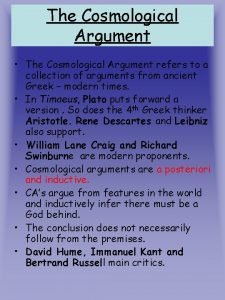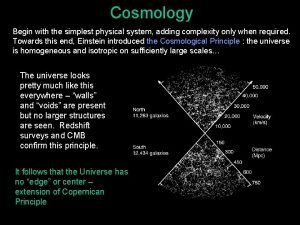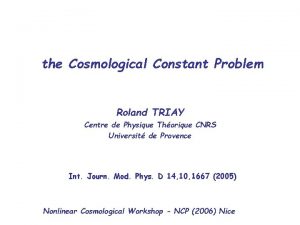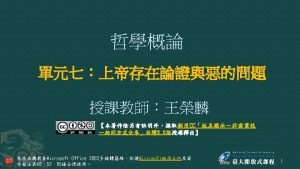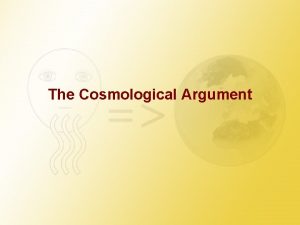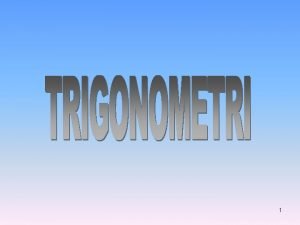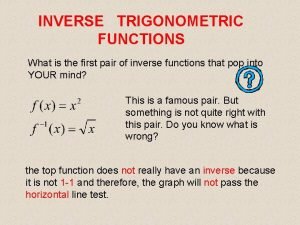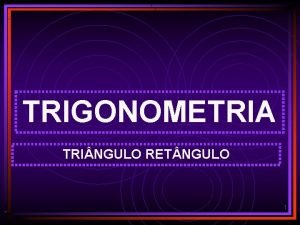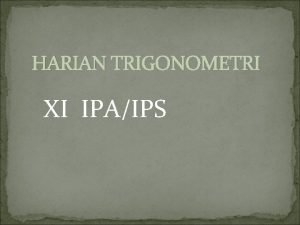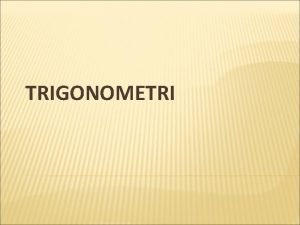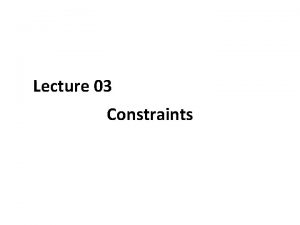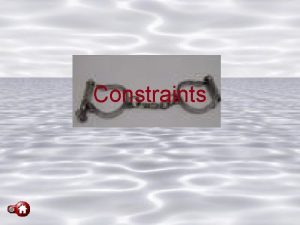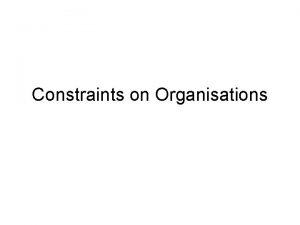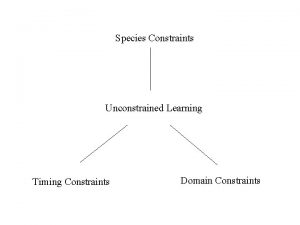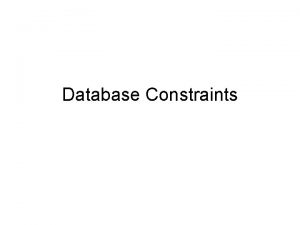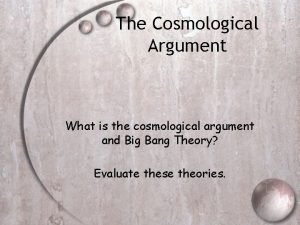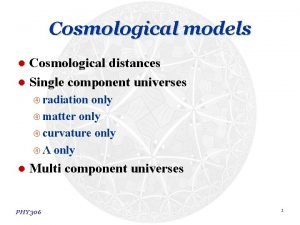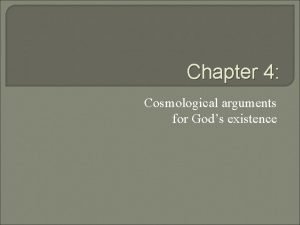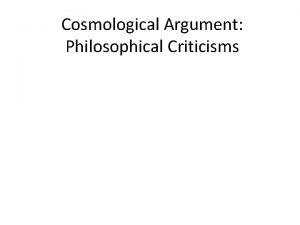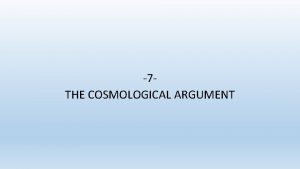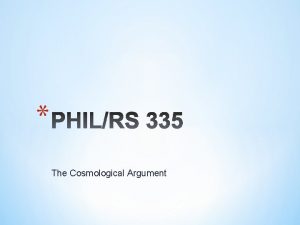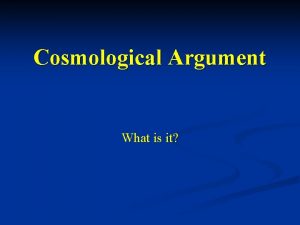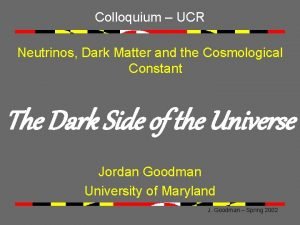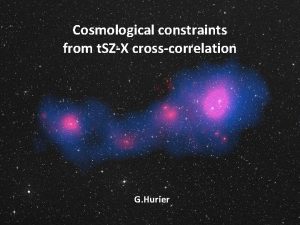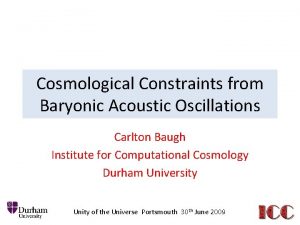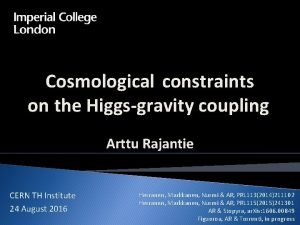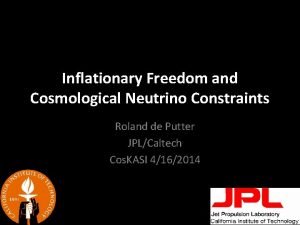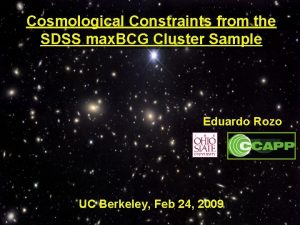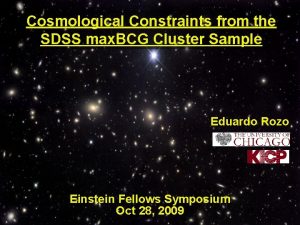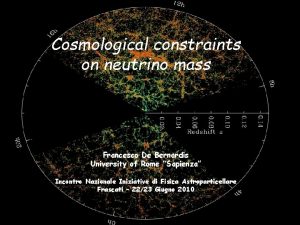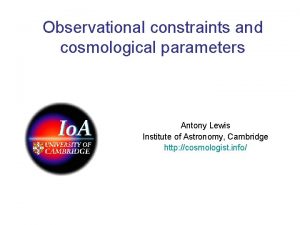ASIAACCMSIAMSLe Cos PANTUPhysicsNTNUPhysics Joint Colloquium Cosmological constraints from











![Redshift-space distortion effects [Horizon-Run 4 : Kim et al. 2015, JKAS, 48, 213] on Redshift-space distortion effects [Horizon-Run 4 : Kim et al. 2015, JKAS, 48, 213] on](https://slidetodoc.com/presentation_image/340c98a3a2cbd435ee6db69d02c67257/image-12.jpg)













- Slides: 25

ASIAA/CCMS/IAMS/Le. Cos. PA/NTU-Physics/NTNU-Physics Joint Colloquium Cosmological constraints from the redshift dependence of the Alcock-Paczynski effect 13 th Rencontres du Vietnam Cosmology, ICISE, Quy Nhon, Vietnam July 11, 2017 Changbom Park (Korea Institute for Advanced Study)

ASIAA/CCMS/IAMS/Le. Cos. PA/NTU-Physics/NTNU-Physics Joint Colloquium Cosmological constraints from the redshift dependence of the Alcock-Paczynski effect 13 th Rencontres du Vietnam Cosmology, ICISE, Quy Nhon, Vietnam July 11, 2017 Changbom Park (Korea Institute for Advanced Study) with Xiao-Dong Li & Juhan Kim, Sungwook Hong (KIAS), Cris Sabiu, Hyunbae Park (KASI), Donald Schneider (Penn State), David Weinberg (OSU)

1 100 th Anniversary of the Modern Cosmology: Expansion history of the universe vs matter contents Observations The Universe is expanding (1929). The expansion has been accelerating recently (1998). General relativity Properties of spacetime vs amount and type of the energy contents in the universe. Expansion history a(t) vs the energy contents of the universe Distance a(t)

Expansion history of the universe from geometrical shape of cosmic structures Comoving sizes Δz H(z) (flat universe) Suppose, for some particular object, we know the ratio where If we adopt a wrong cosmology in the ‘z r’ transformation, we see apparent shape distortion by a factor r|| r┴ Δθ where line of sight !

Shape of structures in comoving spaces in true (Ωm=0. 26 & w=-1) and wrong cosmologies Apparent Shape Real Shape (Ωm & w) stretch (0. 1, -1. 0) (0. 4, -1. 0) (0. 1, -1. 0) (0. 26, -0. 3) (0. 26, -2. 5) (0. 4, -1. 0) (0. 26, -0. 3) compression

A Test for the Cosmic Expansion History based on Geometrical Shape of Cosmic Structures (Alcock & Paczynski, 1979, Nature, 281, 358)


Gravitational force is isotropic! So galaxy clustering should be statistically isotropic on all scales. Allows us to use the small-scale clustering Achieve higher statistics for a given sample [Kim & Park 2005]

Redshift-space distortion effects Galaxy redshifts are contaminated by peculiar velocities! Real space Redshift space A. Large scale flow: LOS compression of filaments and walls and radial elongation of voids Stretching effect . B. Small scale random motions: LOS stretch, the finger-of-god effect. line of sight [Hamilton 97]

Galaxy distribution in redshift space

Galaxy distribution in real space
![Redshiftspace distortion effects HorizonRun 4 Kim et al 2015 JKAS 48 213 on Redshift-space distortion effects [Horizon-Run 4 : Kim et al. 2015, JKAS, 48, 213] on](https://slidetodoc.com/presentation_image/340c98a3a2cbd435ee6db69d02c67257/image-12.jpg)
Redshift-space distortion effects [Horizon-Run 4 : Kim et al. 2015, JKAS, 48, 213] on 2 -point correlation function along (p) & across (s) LOS θ r(z) s

2 -point CF in 6 redshift bins (SDSS BOSS sample; Fo. G at 1 − μ → 0 and Kaiser effect at 1 − μ > 0. 2) adopted in these particular plots θ=0 θ = 90 : Even though RSD effects on CF is big, its redshift evolution is small! Redshift evolution of CF is dominated by the cosmological effects (Li, Park+ 2015).

μ- dependence of CF Real-space CF

Normalized CF Real-space CF Evolution of the RSD effects is very small and can be estimated.

2 Application to BOSS DR 12 Samples I. Theory 1. AP test 2. RSD effects II. Application 1. BOSS sample 2. Constraints

SDSS-III BOSS DR 12 sample LOWZ 8, 337 deg 2. CMASS 9, 376 deg 2 (~1/4 sky). ~1. 13 M gals at 0. 15 ≤ z ≤ 0. 7 (Li, Park et al. 2016)

Methodology 0. Samples in 6 redshift bins from CMASS & LOWZ 1. Adopt a cosmology and r(z) relation 2. Measure ξ(s, μ) in each z-bin; 3. Quantify the redshift evolution of ξ(s, μ) by a chisq value (Wrong Cos. → redshift evolution of ξ → chisq≠ 0 → Disfavored) 4. Try a different cosmology and repeat 1 -3 → Cosmological Constraints Systematics Correction (intrinsic redshift evolution): HR 4 mock galaxy samples Covariance Matrix: HR 3 PSB subhalo samples

Horizon Run 3 (Kim et al. 2012) V=(10. 815 h− 1 Gpc)3 , 71203 particles WMAP 5 Cosmology Dark matter halos in 27 whole-sky lightcones Covariance Matrix Horizon Run 4 (Kim et al. 2015) V= (3. 15 h− 1 Gpc)3 , 63003 particles WMAP 5 Cosmology Mock ‘galaxies’ in 1 whole-sky lightcone (Hong+ 2015) Correction for systematics

Constraints on cosmological parameters where δξ = ξ(other z-bin) – ξ(1 st z-bin) Systematics: δξ → δξ – (sys. est. from HR 4) χ2 = Σ δξ * Cov-1 * δξ (Covariance from mock surveys) where the summation is over redshift bins and different μ bins. The PDF of the cosmological parameters θ=(Ωm, w) using our AP method alone.

Cosmological constraints (X. Li, C. Park et al. 2016) Constraints from CMB, SN Ia, BAO, H 0, and our AP probes. Planck temperature and polarization anisotropies: Ade et al. (2015) JLA SNIa : Betoule et al. (2014) BAO from BOSS DR 11: Anderson et al. (2013) BOSS DR 11 BOSS combined with HST measurement (H 0=70. 6+-3. 3) : Riess et al. (2011), Efstathiou et al. (2014)

Combined constraints If CMB, SN Ia, BAO, H 0, and our AP probes are statistically independent, (X Li, C Park, CG Sabiu, DH Weinberg, DP Schneider, J Kim, & SW Hong 2016)

3 On going progresses and future plans 1. Full usage of the 2 d CF plane (H Park) vs Modelling small-scale RSD (M Tonegawa; Y Zheng) 2. Other clustering statistics and combined analysis … 3 pt CF (X Li), BAO scale 2 pt CF, Minkowski functionals (S Appleby; G Rossi; C Laigle) Multi-statistics methods (Park 2000) to remove cosmic variance 3. Extend the test to various cosmological, dark energy, & gravity models … relaxing other cosmological parameters, dynamical DE w (H Park; X Li), non-GR models with k-dept. growth factor (X Chen), … 4. Expand the observational sample Combined low-z sample (HS Hwang) Upcoming deeper large-volume surveys … SDSS 4 e. BOSS, DESI (H Park; HS Hwang)

= 0. 51 (+0. 13 -0. 08) : multi-tracer / multi-statistics method (Park 2000)

Summary We propose to use the conservation of galaxy clustering (an)isotropy to constrain a(t) The method requires only a small correction to the redshift evolution of RSD effects, and yields impressive constraints of in combination with other probes. Stronger constraints on Wm-w than most other methods & complementary! Use of ‘small-scale’ clustering giving higher statistical constraining power! (AP DA*H(z); Volume DA 2/H(z); SN Ia DL(z); BAO DA(z)/r. S & H(z)/r. S ) The method applies not just to 2 p. CF, but can be used in combination with any clustering statistics (ex. genus - Park & Kim 2010; density gradient vector – Li+ 2014). -- It may be possible to overcome the cosmic variance problem. cám ơn
 Colucci v colucci scc
Colucci v colucci scc Ontological cosmological teleological
Ontological cosmological teleological Cosmological constant
Cosmological constant Descartes cosmological argument
Descartes cosmological argument Kant's criticism of cosmological argument
Kant's criticism of cosmological argument Descartes cosmological argument
Descartes cosmological argument Einstein cosmological constant
Einstein cosmological constant Cosmological argument poster
Cosmological argument poster St thomas aquinas cosmological argument
St thomas aquinas cosmological argument Lookback time
Lookback time Roland triay
Roland triay Kalam cosmological argument
Kalam cosmological argument St thomas aquinas cosmological argument
St thomas aquinas cosmological argument Lamb grading chart
Lamb grading chart Break joint vs spool joint
Break joint vs spool joint Ellipsoid joint examples
Ellipsoid joint examples Luschka's joints
Luschka's joints Semi permanent joining methods
Semi permanent joining methods Joint bank account in joint venture
Joint bank account in joint venture Struttura di una storia
Struttura di una storia Nilai dari sin 160° + sin 40° adalah
Nilai dari sin 160° + sin 40° adalah What quadrants is arccos restricted to
What quadrants is arccos restricted to Sen (a-b)
Sen (a-b) Sin 112°
Sin 112° Nilai dari cos 1950 derajat adalah
Nilai dari cos 1950 derajat adalah Testo narrativo fabula
Testo narrativo fabula
